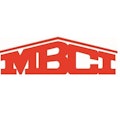If you care about eco friendliness and sustainability, then Life Cycle Assessment (LCA) is no doubt familiar to you. But if you aren’t aware, let me tell you what it is and why you should care.
LCA is a way of quantifying the environmental impact generated by the manufacture and delivery of a product by looking at the resources consumed and wastes generated between two specific points on the supply chain.
Often LCA refers to these environmental aspects and potential impacts associated with a product, process, or service through all its life stages. Think of the term “Cradle to Grave” from a non-biological point of view.
To make the assessment, the resources used and the wastes generated are calculated, mass-balanced, and normalized relative to a specific quantity called a functional unit. This produces what is called a Cradle-to-Gate Life Cycle Inventory. This LCI data can be registered in international databases for use by computer programs that calculate equivalent environmental impacts for the construction, life use and disposal of an entire building over an assumed life, called a Cradle-to-Grave Whole Building LCA.
For building products and materials, a “Cradle-to-Gate “LCA is examined so that all impacts occurring prior to delivery to the jobsite are considered.
Why is LCA important when you select construction products?
Many green building programs such as the USGBC’s LEED, the International Green Construction Code and Green Globes give credit for whole-building LCA calculations. They typically require an LCA evaluation be run once for the building in question, and again for a hypothetical baseline or reference building. Credit can be given based on the environmental impact reduction achieved by the proposed building versus the reference building. The products chosen affect the ultimate whole building LCA outcome.
Also, companies use LCA to demonstrate transparency and corporate credibility to stakeholders and customers. Athena Sustainable Materials Institute— a think tank working with construction professionals, manufacturers and policy makers to develop the next generation of green buildings—says on its website that LCA is used in new product research and development where environmental footprint is important to the future positioning or cost structure of a product. “The benefit to LCA is simple: reliable, transparent data for both manufacturers and consumers, enabling better decisions.”
MBCI cares about LCA. We have been actively involved in the development of LCA data for our core products since they first started appearing in green building standards. We have cooperated with the Metal Construction Association (MCA) in efforts to develop industry average data for cold-formed metal cladding systems and insulated metal panels (IMPs).
Metal panels and roofs are inherently sustainable, energy efficient and recyclable. When making your next product purchase decision, remember that MBCI has taken extra steps to make sure all our products are produced in such a way to make as little negative impact on the environment as possible before it gets to your construction site. Peace for the environment; peace of mind for you.
About the Author

Brad Johnson
Brad Johnson is vice president of eco-FICIENT® Sales, MBCI’s insulated metal panel (IMP) product line. Johnson joined MBCI in 1996 and held management positions with MBCI and Metal Depots before joining eco-FICIENT®. Johnson sits on the Metal Construction Association’s IMP Council and has written several articles for various trade publications. He is a graduate of Clemson University.
